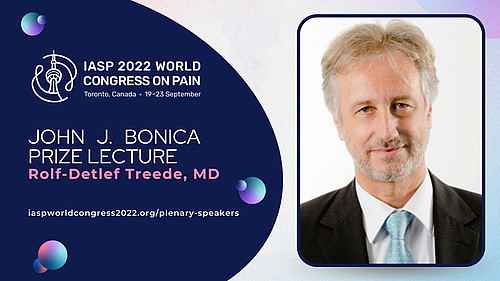Sie befinden sich hier
Inhalt
29th September 2022
Prof. Rolf-Detlef Treede, head of the Department of Neurophysiology has been awarded the John J. Bonica Prize at the World Congress of the International Association for the Study of Pain (IASP). The professional society awards the prize every two years to a person who has made major contribution to pain research or therapy.
The 19th World Congress on Pain took place from 19th-23rd of September in Toronto, Canada. It is the largest global gathering of pain professionals. This event brings together more than 7,000 scientists, clinicians, and healthcare providers from around the world and across pain disciplines.
Interview with John J. Bonica Award winner Prof. Treede
21.09.2022 Interview with Bonica Award Winner Professor Rolf Treede
John J. Bonica Award Lecture:
“Central Sensitization: Clinical Utility Of A Physiological Concept For ICD-11 And Nociplastic Pain”
The physiological concept of „central sensitization“ refers to a leftward shift of the stimulus-response functions of nociceptive neurons in the central nervous system, with lowered response thresholds, enhanced suprathreshold responses, new or enlarged receptive fields and increased spontaneous activity. We currently know three distinct types of central sensitization: spinal, brainstem and thalamo-cortical. Use-dependent synaptic plasticity in the spinal cord induces mechanical hyperalgesia or allodynia in adjacent uninjured tissue. Dysregulation of descending brainstem controls leads to widespread or regional pain and hypersensitivity. Comorbid anxiety or depression may be considered as indicators of central sensitization in thalamo-cortical circuits. The new International Statistical Classification of Diseases and Related Health Problems (ICD-11) distinguishes chronic primary pain conditions (“pain as a disease”) and six classes of chronic secondary pain conditions (“pain as a symptom”). Use-dependent synaptic plasticity in the spinal cord contributes to all of them. Evidence for dysregulated brainstem controls has been found in many chronic primary pain conditions. The relationship between sensitization of brain circuits and comorbidities of chronic pain deserves further study. The new concept of “nociplastic pain” does not yet distinguish between these subtypes, which may contribute to its lack of broad acceptance in the pain research and management communities.


